<< Our Photo Pages >> Bagan temple area - Ancient Temple in Burma (Myanmar)
Submitted by KaiHofmann on Thursday, 24 May 2012 Page Views: 6611
Multi-periodSite Name: Bagan temple area Alternative Name: Old BaganCountry: Burma (Myanmar)
NOTE: This site is 0.668 km away from the location you searched for.
Type: Ancient Temple
Nearest Town: Bagan Nearest Village: Myinkaba
Latitude: 21.172222N Longitude: 94.860278E
Condition:
| 5 | Perfect |
| 4 | Almost Perfect |
| 3 | Reasonable but with some damage |
| 2 | Ruined but still recognisable as an ancient site |
| 1 | Pretty much destroyed, possibly visible as crop marks |
| 0 | No data. |
| -1 | Completely destroyed |
| 5 | Superb |
| 4 | Good |
| 3 | Ordinary |
| 2 | Not Good |
| 1 | Awful |
| 0 | No data. |
| 5 | Can be driven to, probably with disabled access |
| 4 | Short walk on a footpath |
| 3 | Requiring a bit more of a walk |
| 2 | A long walk |
| 1 | In the middle of nowhere, a nightmare to find |
| 0 | No data. |
| 5 | co-ordinates taken by GPS or official recorded co-ordinates |
| 4 | co-ordinates scaled from a detailed map |
| 3 | co-ordinates scaled from a bad map |
| 2 | co-ordinates of the nearest village |
| 1 | co-ordinates of the nearest town |
| 0 | no data |
Internal Links:
External Links:
I have visited· I would like to visit
DrewParsons has visited here
The temples of Bagan in Burma / Myanmar were built from the 9th to 13th century CE. From 10000 temples in the height time of the kindom of Bagan, today remains of 2200 temples are still visible. The huge Bagan area is 13 x 8 km wide.
Please note: The site lies in Burma / Myanmar not in Thailand!
Note: Ancient Burmese City of Bagan Struggles for International Recognition.
You may be viewing yesterday's version of this page. To see the most up to date information please register for a free account.
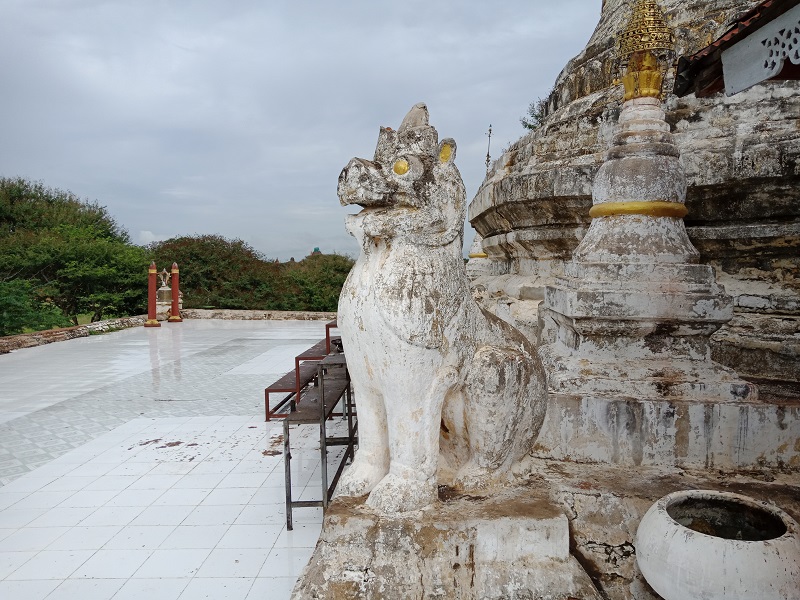
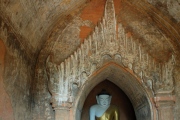
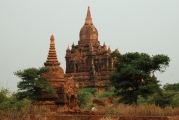
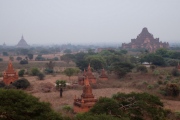
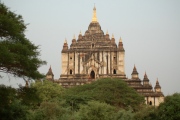

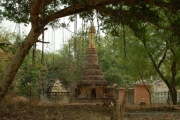



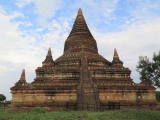
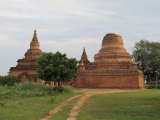

Do not use the above information on other web sites or publications without permission of the contributor.
Click here to see more info for this site
Nearby sites
Click here to view sites on an interactive map of the areaKey: Red: member's photo, Blue: 3rd party photo, Yellow: other image, Green: no photo - please go there and take one, Grey: site destroyed
Download sites to:
KML (Google Earth)
GPX (GPS waypoints)
CSV (Garmin/Navman)
CSV (Excel)
To unlock full downloads you need to sign up as a Contributory Member. Otherwise downloads are limited to 50 sites.
Turn off the page maps and other distractions
Nearby sites listing. In the following links * = Image available
657m SW 222° Bagan Archaeological Museum* Museum
46.2km SE 129° Popa Taungkalat Monastery* Ancient Temple
140.3km SSE 157° Beikthano-myo Ancient Village or Settlement
504.9km SSE 164° Shwedagon Pagoda* Ancient Temple
523.5km NW 306° Wari-Bateswar Ancient Village or Settlement
561.1km NW 325° Cherrapunji* Standing Stones
571.3km NNW 327° Mawphlang Sacred Forest* Standing Stones
597.1km ESE 119° San Chao Pho Pratu Pha Rock Art
616.4km NNW 339° Mahadeoshal Ancient Village or Settlement
640.7km N 359° Charaideo Maidams Barrow Cemetery
668.8km SE 133° Sukothai* Ancient Village or Settlement
704.2km NW 308° Mahasthangarh Ancient Village or Settlement
771.3km NNW 335° Gom Kora Bhutan Natural Stone / Erratic / Other Natural Feature
825.1km NNW 330° Bumthang cup-marked Stone Rock Art
826.2km NNW 330° Dorje Dolmen Thamshing* Burial Chamber or Dolmen
874.1km ESE 115° Phu Phra Bat Historical Park Rock Art
887.1km NW 323° The National Museum of Bhutan* Museum
891.2km NW 323° Kyichu Lhakhang Ancient Temple
896.4km NW 323° Taktsang Monastery, Bhutan* Ancient Temple
910.5km ESE 101° The Plain of Jars* Ancient Mine, Quarry or other Industry
923.8km W 263° Konarak sun temple* Ancient Temple
929.1km NNW 341° Tibetan Kings´Tombs Artificial Mound
934.6km SE 138° Lopburi Temples* Ancient Temple
943.4km W 265° Rajarani temple* Ancient Temple
943.6km W 265° Parsusrameswar temple* Ancient Temple
View more nearby sites and additional images






 We would like to know more about this location. Please feel free to add a brief description and any relevant information in your own language.
We would like to know more about this location. Please feel free to add a brief description and any relevant information in your own language. Wir möchten mehr über diese Stätte erfahren. Bitte zögern Sie nicht, eine kurze Beschreibung und relevante Informationen in Deutsch hinzuzufügen.
Wir möchten mehr über diese Stätte erfahren. Bitte zögern Sie nicht, eine kurze Beschreibung und relevante Informationen in Deutsch hinzuzufügen. Nous aimerions en savoir encore un peu sur les lieux. S'il vous plaît n'hesitez pas à ajouter une courte description et tous les renseignements pertinents dans votre propre langue.
Nous aimerions en savoir encore un peu sur les lieux. S'il vous plaît n'hesitez pas à ajouter une courte description et tous les renseignements pertinents dans votre propre langue. Quisieramos informarnos un poco más de las lugares. No dude en añadir una breve descripción y otros datos relevantes en su propio idioma.
Quisieramos informarnos un poco más de las lugares. No dude en añadir una breve descripción y otros datos relevantes en su propio idioma.